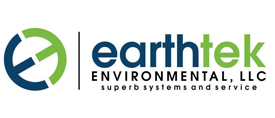Earthtek Packaged Wastewater Plants
Carotek.com displays pricing in accordance with our manufacturer’s internet pricing policies. Contact us for volume discounts and quotes.
 Images are representative only - actual product may differ
Images are representative only - actual product may differPart #ETHTK-PLNTS
Requires QuoteTo obtain a price quote or ask a question, add item(s) to your cart and select 'Request Information or Quote' from the cart page.
Brand : Earthtek Wastewater Plants
Turnkey packaged wastewater plants cover Pumping wastewater collection systems, Aerobic Moving Bed Biofilm Reactor, Sequencing Batch Reactor (SBR) Wastewater Treatment, as well as Primary & Secondary tanks.
States : NC, SC
- Details
- Industry / Applications
Earthtek's Packaged Wastewater Plant Products
Earthtek primary tanks are typically long horizontal tanks which allow plenty of time for solids to settle and FOG to float. Multiple tank openings are provided to allow for solids removal.
The primary treatment tank stores the influent wastewater during the SBR react, settle and decant phases, removes the influent settleable solids and FOG, and provides anaerobic digestion of waste sludge from the SBR. Digested sludge is typically pumped from the tank on an as-needed basis by contract septic haulers.
The primary tank contains duplex submersible pumps which discharge the settled wastewater to secondary treatment processes. The primary tank will typically eliminate the need for a plant raw influent lift station. By pumping to the secondary treatment, the downstream tanks can be installed at a much lower depth so the equipment is more easily serviced.
Sabre Sequencing Batch Reactor (SBR) Wastewater Treatment
Our most versatile plant is our activated sludge Sabre a fill-and draw system. In this system, wastewater is added to the reactor, treated to remove undesirable components, and then discharged. Our Sabre package SBR plants are typically provided in buried fiberglass tanks designed to be out of sight and out of mind. No odors, no noise, and practically unnoticeable as a treatment plant. Our specialized primary treatment process allows cost effective, redundant, single-tank, true SBR systems with no influent and associated turbulence during settling and discharge. Our Sabre SBR’s provide excellent treatment quality and can be utilized for most applications over 10,000 gpd. Our Sabre SBR design is capable of providing nitrogen (denitrification) and phosphorus reduction. These systems are typically used for communities, schools, camps, and commercial applications.
SBR offers:
Reduced cost compared to conventional activated sludge systems due to elimination of clarifiers and return sludge pumping and piping.A smaller footprint compared to conventional activated sludge plants.Higher quality effluent since there is no incoming flow during the settling and discharge phases of treatment.The SBR process handles variable flows and loading conditions better than conventional activated sludge plants since the number of cycles are automatically adjusted.Separate mixing and aeration and variable phase times allow nutrient reduction by denitrification and phosphorus removal without additional treatment processes.Time or level-controlled fill phases allow partial tank volumes for very low flow treatment during startup or off seasons.
Amber (Aerobic Moving Bed Biofilm Reactor) MBBR
MBBR is an attached-growth biological treatment process that uses special carriers to create a large surface area for biofilm growth. The Amber MBBR plant can be designed as a stand-alone treatment process or to provide pre-treatment, effluent polishing, nitrification, or nutrient reduction. The MBBR treatment process is typically used for smaller (< 10,000 gpd) flows, ammonia polishing, and high-strength wastewater pre-treatment.
The Amber MBBR reactor consists of a tank filled with plastic media having specific gravity slightly less than 1.0. The large surface area of the media provides the abundant contact area for bacterial attachment. Biomass grows on the surfaces of the media as a thin film. Medium or coarse bubble diffusers placed at the bottom of the reactor maintain a dissolved oxygen (DO) concentration of about 4 – 5 mg/L for BOD removal and nitrification. To keep the media from flowing out of the tank, screens are placed on the discharge outlet piping. A clarifier may be placed downstream of the MBBR to separate sloughed solids from the treated effluent. The settled solids are wasted from the system and no sludge recycle is required for this process.
Reduced footprint and cost compared to conventional activated sludge systems due to increased surface area of biocarriersCan be easily expandable by simply adding additional mediaSingle pass process with no return sludge requiredThe MBBR process handles variable flows and loading conditions automatically without interventionMinimal operator attention as no F/M ratios or mixed liquor solids levels to maintain.
Septic Tank Effluent Pumping (STEP) Wastewater Collection Systems
Septic Tank Effluent CollectionFor areas where gravity collection is not feasible due to topography, cost, or I/I issues, a STEP collection system is a great alternative. Much like low pressure grinder pump systems, the STEP system will pump wastewater through small-diameter piping to the wastewater treatment plant. Unlike gravity or grinder pump systems, the STEP system will also provide treatment as well as collection.
Wastewater flows by gravity from each building to a STEP tank buried below ground. The solids settle to the bottom and the scum floats to the surface in the STEP tank leaving a "clear zone" in the center of the tank. Water from the clear zone is pumped periodically into the small diameter collection lines and sent to the wastewater plant for additional treatment. Small diameter lines can be used since the solids and scum have been removed in the STEP tank.
Reduced cost compared to conventional gravity and most grinder pump sewersSmaller, more energy efficient, reliable and longer lasting effluent pumps than grinder pump systemsReduced BOD and TSS loading to the treatment plant compared to gravity or grinder pump sewersAllow smaller, directionally-bored collection lines without the need for manholes or many cleanouts compared to gravity and grinder pump sewersIndividual tanks allow problems to be isolated to individual users so issues can be corrected in comparison to multiple gravity sewer connectionsA problem with one STEP pump tank will not affect neighboring users like a plugged gravity main
Municipal & Industrial Wastewater

